Guidelines for Installing Castables in Hot Weather
Articles
In general, it is known that chemical reaction rates are increased as temperatures are raised. But, the opposite is also true at lower temperature. Chemical reaction rates are higher and proceed quicker at high temperatures.
The same chemical principles apply to castable refractories, specifically cement bonded castables. When hot water is added to hot castables, the reaction of the water with the castable ingredients is increased. This, primarily, results in a shorter wet-out time, increased rate of cement hydration, and quicker castable set time.
GENERAL GUIDELINES For Installing Castables in HOT AIR TEMPERATURES
1) Refractory monolithics (dry castables, dry gun mixes, plastics, wet and dry mortars, etc) should be stored in a dry, covered, weather-protected location, such as a permanent warehouse, and placed on a concrete slab, asphalt pad, or other impermeable surface. The product should be stored on the original pallets but elevated from the surface to allow air circulation. Care should be taken to avoid high humidity locations where moisture can collect under the plastic pallet wrapping.
Refractory monolithics should NOT be stored on grass, soil, or other non-compacted surface or any area where moisture can collect, stand, or come in contact with the refractory or refractory packaging.
2) In general, the ideal temperature range during storage is between 10°C (50°F) and 27°C (80°F).
3) Use a Digital Pocket Thermometer to measure temperatures. These thermometers are available from sources, such as the Fisher Scientific or Amazon.co.uk.
4) Castables can set faster in hot weather conditions. Castables should be stored in a cool location prior to mixing and installation. Right before mixing, measure and record castable temperature with digital thermometer.
5) Mixing equipment, water, and material pallets should be placed in a shaded location and not in direct sun. Hot equipment and hot water can have a negative effect on working time. A refrigerated truck van would be ideal to store pallets of castables during hot weather conditions.
Note : A pallet of material can take several days to cool after being stored in hot conditions.
6) Use cold water when casting in hot weather conditions. Water for mixing can be cooled by coiling a garden hose in a 55 gallon drum, that contains water and block ice. The garden hose would act as heat exchanger between the iced water and water in the garden hose.
7) Check pH of mixing water. Water for mixing with a high pH (greater than pH=8) or a low pH (less than pH=6) should not be used. Total Dissolved Solids (TDS) should be less than 1500 ppm, in particular, dissolved salts, such as sodium, potassium, and calcium nitrates, sulfates, or chlorides, should be avoided or minimized.
8) When planning installations in hot summer conditions, consider ordering castables for HOT weather (or “H” mixes). “H” mixes contain a added set retarder, which extends working time in hot weather conditions. It should be noted that “H” mixes MUST NOT BE INSTALLED IN COOL or COLD WEATHER conditions since the material will have a significantly extended set or no setting.

